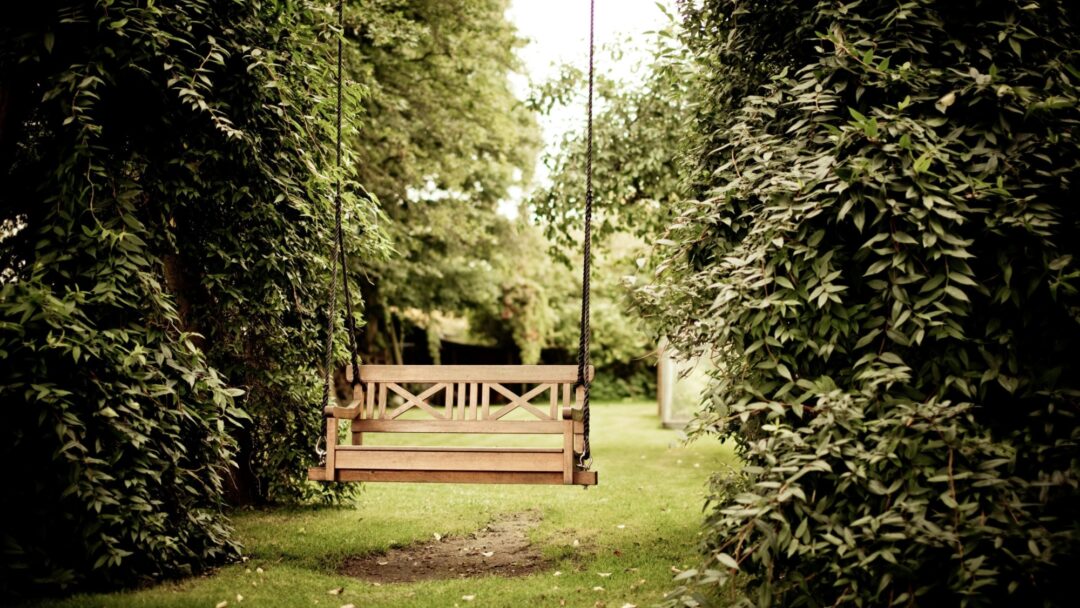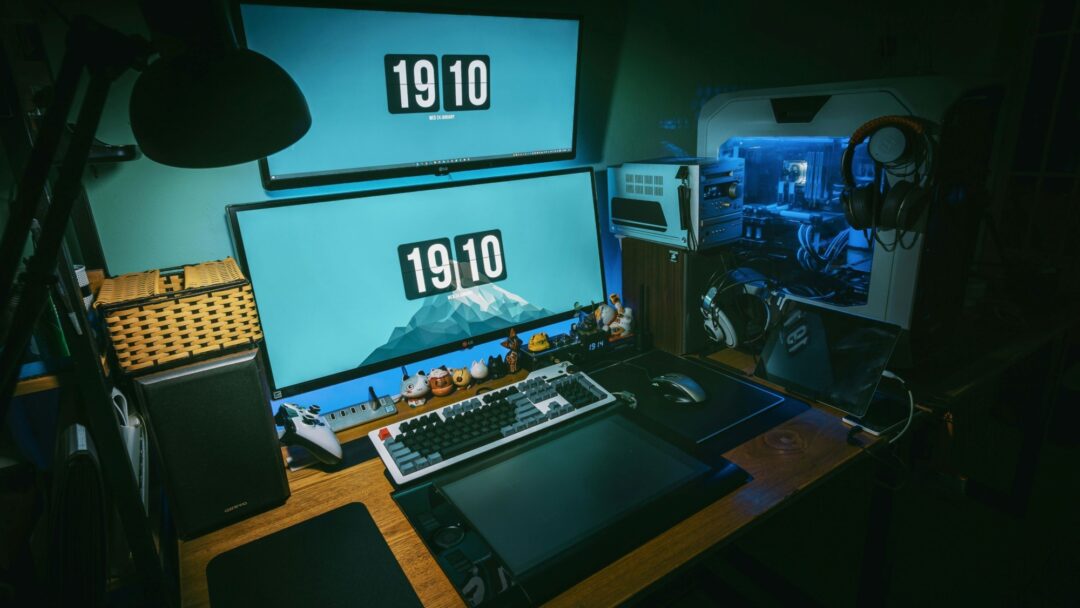Audio
Steven Wells: horticultural therapy
Ablequest by
2RPH3 seasons
23 February 2024
14 mins
An expert discusses the use of horticultural therapy for people with disabilities.

2RPH's Ablequest is a series of 15 minute programs which examines developments in assistive technology and initiatives for those people living with a wide range of disabilities. Presented by Barbara Sullivan, Marni Roper and Elaine Wziontek.
In this program: This program discusses horticultural therapy with nurse and horticultural therapist Steven Wells.
Speaker 1 00:04
With information on the latest developments in assistive technology and initiatives, from the studios of 2RPH in Sydney, RPH Australia brings you AbleQuest. Hello, I'm Barbara Sullivan. Our guest today is Stephen Wells, a nurse and horticultural therapist who believes that getting your hands dirty, potting plants and watering gardens, can have huge benefits for well -being and regaining physical skills.
Speaker 1 00:39
Stephen's love of plants started when he was a child growing up on a market garden farm in South Australia. He started a career in nursing and after 10 years began a career in horticulture. He manages the gardens across the Austin Health Network.
Speaker 1 00:56
Now he combines his medical training with his gardening experience, helping patients with disabilities. Horticultural therapy is a niche medical service not widely offered in hospitals and rehab, but Stephen says engaging with nature can benefit many patients.
Speaker 1 01:14
He spoke to Elaine Jontek from the garden about his passion for plants.
Speaker 2 01:19
So welcome to the program, Stephen.
Speaker 3 01:21
Hi Elaine, how are you? Great to be here.
Speaker 2 01:23
Ah, I'm really well today looking forward to the New Year's programs with AbleQuest. So how did you get interested in plants? Was this from childhood?
Speaker 3 01:32
Growing up in a gardening family, my parents and family, the heritages were market gardeners and orchardists. Dad had big veggie garden as well as a flower garden and both my parents were interested in gardens and gardening in the forestry and very often so I have green blood.
Speaker 3 01:49
Green blood? Wow. No royal blood in my lineage. It's definitely more green, which I'm very thankful for.
Speaker 2 01:56
What sort of orchards were they?
Speaker 3 01:58
They had an orange orchard. That was the predominant orchard. The Market Garden was cabbage and cauliflower, which they produced from seed through to market, but the growing in my era was predominantly the cabbage and cauliflower.
Speaker 2 02:12
So you decided on nursing as a career straight from school, did you?
Speaker 3 02:16
Yeah, I went into nursing studies straight away and it's something that I've come across during my latter part of schooling and did some work experience in that and really enjoyed it so that guided me and did that.
Speaker 3 02:29
I went to South Australia, thoroughly enjoyed that and been nursing now for 30 years.
Speaker 2 02:36
bulb. So tell us how you got into horticultural therapy.
Speaker 3 02:40
I went back to do some extra studies about 20 years ago now, horticulture. My interest was at that stage of getting into maybe garden design, but during that course, which was a two year diploma of horticulture course here in Melbourne, I came across the term horticultural therapy and heard about that.
Speaker 3 02:59
At the time it was of interest, but also I had in my mind thinking while I'm getting out of healthcare and doing garden design and this is an interesting topic. So I didn't pursue it straight away, but it was probably a few years later that I reignited that interest when I went back to nursing and started to develop a horticultural therapy program at hospital, which was great.
Speaker 3 03:23
So yeah, the term and the field was something that I came across during my horticulture studies and I was very thankful to hear about it, combining the nursing and the horticulture was really about realising that I had been within the healthcare system as a nurse for a reason and I realised that being in a position to fortunately be able to combine the both in the one facility that I was working at, which is a rehabs cognitive and physical rehab facility, was an opportunity that was really good to combine and to bring together.
Speaker 2 03:57
So it complements traditional medicine.
Speaker 3 04:00
Certainly, the Horticultural Therapy Program that we've established works in conjunction as part of the picture of providing health care. I'd like to say that the Horticultural Therapy's engagement with gardens and use of gardens is the golden chalice and the cure all, but it's not that, but it's a wonderful part of the health care provision and I've certainly seen examples of that.
Speaker 2 04:24
What kind of patients can you help? Do they already need to know about gardening?
Speaker 3 04:29
No, so in my experience, the wonderful thing about the horticultural therapy model is that it taps into and connects with various people of different circumstances or situations. Horticultural therapy generally as a model is more goal -orientated, so therefore works in the healthcare setting a bit more appropriately and suitably.
Speaker 3 04:51
So where I work is a rehab facility that caters for people with spinal cord injuries, acquired brain injuries, strokes, orthopedic and amputees, so it has a quite a mix of patients and varying reasons for being in hospital, so some of those elements of connecting with them in the horticulture therapy model is sometimes along the lines of physical connections and working on different strengthening or motor skills for example, whereas others it may actually tap into more of the psychological or emotional well -being connection and time in the garden and doing activities may actually tap into improving their self -esteem and cognitive improvements required during this, I think.
Speaker 2 05:37
So what activities do you do and is it individual or groups?
Speaker 3 05:41
Yeah, good question. I have, over the course of the years, I've been in the program, done both individual and group sessions. At the moment, it's tipping more into the more one -on -one sessions, but the activities I tend to do with people vary.
Speaker 3 05:55
So often inside or outside under, under shelter, but sitting perched around a table. We do a lot of activities along the lines of propagating and repotting of plants from one pot size up to another or watering of plants.
Speaker 3 06:13
So it's very low impact in the sense of physical context. A lot of people think if they are getting a referral to it, that we might be in the garden doing hard gardening activities. But in the setting that I'm in, it's those activities that I mentioned are the ones that often are very easy to engage people with.
Speaker 3 06:31
Often very, seems very purposeful for them as well. And in that context, they engage with them. So the program I do is a one day a week program. So the plants that I like to use in my setting tend to err on the side of things like succulents because they're very good to work with.
Speaker 3 06:49
They have interesting colors, textures, shapes, but also have a very good success rate. And for me, that's important part of it. When I'm working with patients, if I was to use other materials that I couldn't sustain during the week and look after when we came back the next week and they were all looking wilted or killed over dead, that's not really a good experience for the patient and individual I'm working with.
Speaker 3 07:13
I like to use plants that have a good success rate. And then that then caps into people being able to see that what they're doing is working and is of benefit and has a success. But I don't just use succulents as other examples I use with patients.
Speaker 2 07:32
So how do you think it supports other medical treatments and therapy?
Speaker 3 07:37
I think as part of the holistic approach, the big approach, I see it as something that works with other modalities. So when I'm working with a patient, the referral may come through that it might be based on a physiotherapy direction or an occupational therapist or a speech therapist.
Speaker 3 07:59
So what I'm doing is tapping into the goals that have been set by other team members and aligning the activities with some of the things that the members of the team are working on as well. So it's that collaborative approach rather than fire load approach.
Speaker 2 08:16
Can you give us an example about how that would work with some of your patients?
Speaker 3 08:20
One example that comes to mind is a young gent who I worked with who had a spinal cord injury. He had some use of his upper limbs but not the full strength of the finer, like his fingers and wrists could support some strength through there but didn't have that fine motor control or finger control.
Speaker 3 08:39
But one of the interesting enough, given that, one of the activities that he was very passionate about and interested in doing was actually doing bonsais. And one might think that you would need to always use your fingers with that.
Speaker 3 08:53
But given that it was something that he was passionate about and interested in, what we worked together on was where he could use the tools and the snips and the secateurs to create the shaping of branches.
Speaker 3 09:05
We would use those tools that would then build up the strength in his wrists. But where he couldn't, that's when he would guide me, I would use some of the finer tools under his supervision. So it was that tapping into both the physical strength but also for him, the opportunity to be the one that's taking the control and taking the oversight of what's done because he was the person in that scenario that did all the research, he went off and watched YouTube clips, watched videos, all sorts of things to learn himself and then would bring that back.
Speaker 3 09:40
So there was the activity we were doing in the sessions but also it tapped into for him that thought of researching, looking and guiding that. Another example was working with a lady who worked collaboratively with the physio and she, we would have a raised garden bed that we would be working at but she was a lady who was in a wheelchair and building up her strength in her legs.
Speaker 3 10:05
The ultimate goal of the session collaboratively was for her to build up her strength and her balance while standing and also her endurance but also the time that she would enjoy standing at the raised garden bed, potting up and planting and digging.
Speaker 3 10:23
So it was a good collaborative process where the end goal was her physical goals in a real and practical way for her, a tangible way. Don't we go back to that young Jen who was working with the bonsai, one of the things that he made a comment during the session was that he got him thinking, oh maybe I could do a business and be bonsai on wheels because it was a play on him being in a wheelchair and that was his life now but the thing that struck me about that was for him it was the optimism of what he could do.
Speaker 3 10:55
In a time when he was very much confronted with what he was not able to do, his approach and that opportunity facilitated the optimism of possibility model, working with what people can do knowing what they were needing to be working on but also looking at moving forward.
Speaker 3 11:13
So it taps into the psychological as well as the engaging the physical needs of the patient at that time.
Speaker 2 11:20
So you must have favourite plants that you use for therapy, but are they different from what you enjoy cultivating yourself and looking at?
Speaker 3 11:28
I think there's a bit of an overlap there myself. I guess working in the program's context, I need to be very realistic about the plants that I use and as mentioned, the success of them and how they can be used well with the patients I work with.
Speaker 3 11:45
There's a whole lot of other plants in this wonderful world that are good to work with and so yeah, there certainly are other plants that I enjoy either in my own garden or within the gardens that I create at the hospitals as well.
Speaker 2 11:57
I know nurses and doctors should practice what they preach, so can you tell us briefly about your garden and how you've created spaces for relaxation and fun?
Speaker 3 12:08
Yeah, certainly. That's a very good point. If I'm professing that this is the sort of thing that we need for well -being, then I certainly subscribe to that and have spent good time in my own garden creating a space that is a bit of a sanctuary for me.
Speaker 3 12:21
It's an environment that feels quite lush and encompassing and enveloping. I've created spaces in my gardens that encourage me to rest and to sit amongst the garden. I've got a lot of interest in creating zones, depending on the space of the garden.
Speaker 3 12:39
I've filled it with some sitting areas, some nice spaces for people to come over and catch up with friends. I've even got a recycled garden slide in my garden. Garden slide? Wow. A slide that goes down, I've got a bit of an embankment, so I've got a slide that sits on the ground that goes down the embankment.
Speaker 3 12:57
For a bit of fun, I've got friends that have kids and so when they come to visit, there's something for them to enjoy in the garden as well. So yeah, I like to create spaces that offer opportunity for rest, but also a bit of fun.
Speaker 3 13:09
But ultimately, a sanctuary and a space that for me fills my bucket and fills my energy levels and helps me in managing my day in life as well.
Speaker 2 13:21
Well, it's been great to talk to you, Stephen, and you're gonna continue this area of nursing.
Speaker 3 13:27
Definitely, so I still work as a nurse part -time as well as doing the horticultural therapy roles and gardens, roles that I do here at Austin Health, so yeah, it's certainly good to combine the both and keep them going.
Speaker 2 13:39
Once been great to talk to you today, thanks very much for your time.
Speaker 3 13:43
My pleasure Elaine, great chatting with you too.
Speaker 2 13:45
And that was Stephen Wells, nurse and horticultural therapist at the Royal Talbot Rehab Centre in Cue, Victoria.
Speaker 1 13:57
You have just been listening to AbleQuest, a program that looks at developments in assistive technology and initiatives. From Elaine Jean -Tek and Barbara Sullivan, thank you for listening and goodbye till next program.
Continue listening

Blind Sports Australia CEO Matt Clayton speaks about its work with blind and vision impaired athletes across 21 sports.
Matt Clayton - Blind Sports Australia
Ablequest by 2RPH
5/5/2023
•13 mins
Audio

Vivid, Sydney's celebration of creativity, seen from a disability access focus by its director.
Gill Minervini - Vivid
Ablequest by 2RPH
19/5/2023
•14 mins
Audio

This program discusses dance movement therapy and how it works - featuring Cecilia King of the Dance Therapy Association.
Cecilia King - Dance Therapy
Ablequest by 2RPH
14 mins
Audio

What are the challenges of providing audio description on Oz TV? Hear Lauren Henley, Aust Federation of Disability Organisations.
Lauren Henley - Audio Description
Ablequest by 2RPH
16/6/2023
•14 mins
Audio

In Part 1 of a 2RPH interview, assistive tech expert David Woodbridge explores latest innovations to make everyday life easier.
David Woodbridge - Tech Update Part 1
Ablequest by 2RPH
30/6/2023
•14 mins
Audio

Features Robert Duff-Silsby of Luddi, Perth company developing assistive devices for all people and bodies.
Robert Duff-Silsby - Sexual Wellbeing
Ablequest by 2RPH
13 mins
Audio

In Part 2 of this conversation with 2RPH's Ablequest, expert David Woodbridge reviews latest assistive technologies.
David Woodbridge - Tech Update Part 2
Ablequest by 2RPH
28/7/2023
•14 mins
Audio

Matt Clayton of Blind Sports Australia and the Oz team's Chef de Mission, discusses the forthcoming World Blind Games in the UK.
Matt Clayton - World Blind Games
Ablequest by 2RPH
11/8/2023
•13 mins
Audio

Prof Kim Marriott of the Monash Assistive Technology and Society Centre, talks about the purpose and work of the Centre.
Kim Marriott - Monash Assistive Technology and Society Centre
Ablequest by 2RPH
25/8/2023
•13 mins
Audio

Ablequest features an interview with Serena Ovens, new CEO of Assistive Technology Supplies Australia or "ATSA".
Serena Ovens - Assistive Technology Supplies Australia
Ablequest by 2RPH
14 mins
Audio

Part 1 of an interview on the voice-activated app, Bindi Maps.
Anna Wright - Bindi Maps (Part 1)
Ablequest by 2RPH
14 mins
Audio

This is Part 2 of an interview with Dr Anna Wright, explaining how Bindi Maps works.
Anna Wright - Bindi Maps (Part 2)
Ablequest by 2RPH
14 mins
Audio

Artist Ebony Wightman of disability-led We Are Studios talks about art and challenge.
Ebony Wightman - We Are Studios
Ablequest by 2RPH
20/10/2023
•13 mins
Audio

Prof. Leeanne Carey discusses the SENSe program, her team's world-first therapy to help stroke survivors.
Leeanne Carey - SENSe Therapy
Ablequest by 2RPH
2/11/2023
•13 mins
Audio

Youthworks Accessibility Minister Bec Baines talks of making church accessible to young people with disabilities.
Bec Baines - Youth and Worship
Ablequest by 2RPH
16/11/2023
•14 mins
Audio

Nikki Hind, Australia's first blind fashion designer, discusses her work.
Nikki Hind: Blind Grit
Ablequest by 2RPH
1 December 2023
•14 mins
Audio

Dr Dimity Williams, family GP, recommends spending more time in nature - and a "green hour" each day.
Green Hour: Dr Dimity Williams
Ablequest by 2RPH
5 December 2023
•14 mins
Audio

Imagine sitting in a wheelchair for hours, being unable to move your fingers or arm to do simple things like pick up a glass.
Konstanze Hager - Bateo
Ablequest by 2RPH
Konstanze Hager - Bateo
•14 mins
Audio

Action Audio is a new language being created to transcend sport.
Machar Reid - Action Audio
Ablequest by 2RPH
Machar Reid - Action Audio
•14 mins
Audio

What a difference one person with experience, passion and energy can make to many lives.
Julie Ross-Edwards - Head High
Ablequest by 2RPH
Julie Ross-Edwards - Head High
•14 mins
Audio

Driver educator outlines what's needed for a person with disability to get a driver's licence.
Ronak Shah: on-road driving education
Ablequest by 2RPH
12 January 2024
•14 mins
Audio

Vision Australia's Christo Sarantakis talks of his life, blindness and assistive tech changes.
Christo Sarantakis of Vision Australia
Ablequest by 2RPH
26 January 2024
•14 mins
Audio

Introducing Australia's first pictureless feature film, TOUCH, showing in Sydney.
Majella Knobel: "Touch" - open air movie
Ablequest by 2RPH
9 February 2024
•14 mins
Audio

An expert discusses the use of horticultural therapy for people with disabilities.
Steven Wells: horticultural therapy
Ablequest by 2RPH
23 February 2024
•14 mins
Audio

Features articles on latest blind-assistive tech including a new bus app and smart ear buds.
Assistive tech news catchup
Ablequest by 2RPH
8 March 2024
•14 mins
Audio

Features an innovative hospitality industry training program for people with disabilities.
Saraya O'Connell - Hotel Etico Independence Program
Ablequest by 2RPH
22 March 2024
•14 mins
Audio

Guests discuss the Obi robotic dining assistant for people with upper arm disabilities.
Hugh Kingley and Rachel Dekkar: Obi
Ablequest by 2RPH
19 April 2024
•14 mins
Audio

A spy-themed computer program tackles the mystery of social encounters - outlined by its company's CEO.
Kathleen Davey - Social Science Translated
Ablequest by 2RPH
3 May 2024
•14 mins
Audio

A Sydney organisation delivers creative arts and life skills to people with disabilities.
ChoppA Green - Studio Artes
Ablequest by 2RPH
17 May 2024
•14 mins
Audio

An award-winning Central Coast NSW disability service shares its successful strategies.
Lonestar Makoni - Breaking Barriers Disability Services
Ablequest by 2RPH
31 May 2024
•14 mins
Audio

Part 1 of a conversation with an Australian neuroscience research pioneer about benefits of music in brain injury recovery.
Professor Sarah Wilson (part 1)
Ablequest by 2RPH
14 June 2024
•14 mins
Audio

Part 2 of a conversation with a leading neuroscientist of benefits of music in brain injury recovery.
Professor Sarah Wilson (part 2)
Ablequest by 2RPH
28 June 2024
•14 mins
Audio

A CEO talks about his company's award-winning assistive physical therapy device.
Justin Keenan - LusioMate
Ablequest by 2RPH
12 July 2024
•14 mins
Audio

Information about a program teaching good cyber-security practices to make daily life safer.
Jess Wilson: Be Connected
Ablequest by 2RPH
26 July 2024
•14 mins
Audio

A veteran print disability broadcaster with macular degeneration shares her experiences.
Teresa Plane - 2RPH
Ablequest by 2RPH
9 August 2024
•14 mins
Audio

The founder of a blind-assistive technology company shares latest developments.
Peter Ford - Control Bionics (part 1)
Ablequest by 2RPH
6 September 2024
•14 mins
Audio

Part 2 of an interview with the head of an innovative blind-assistive technology company.
Peter Ford - Control Bionics (part 2)
Ablequest by 2RPH
20 September 2024
•13 mins
Audio

Looks at a project to better inform refugee and migrant women on AI.
Good Things - Jess Wilson
Ablequest by 2RPH
4 October 2024
•14 mins
Audio

An expert with lived experience corrects some widespread misconceptions about stuttering.
Dale Williams - Stuttering Awareness Day
Ablequest by 2RPH
18 October 2024
•14 mins
Audio

An inventor discusses his an innovative cane tip to help people with blindness or low vision.
Peter Rickards - Sensaball
Ablequest by 2RPH
15 November 2024
•13 mins
Audio

Part 1 of an interview with an Australian expert on low-vision-assistive technology, on AI and other developments.
David Woodbridge (part 1)
Ablequest by 2RPH
29/11/2024
•14 mins
Audio

Conclusion of an interview with a leading Australian expert on blind-assistive technology.
David Woodbridge (part 2)
Ablequest by 2RPH
13 December 2024
•14 mins
Audio

Looks at the leading stroke treatment work of the Royal Rehabilitation Hospital, Ryde NSW.
Jason Redhead and Graham Cooper of Royal Rehab Ryde
Ablequest by 2RPH
10 January 2025
•14 mins
Audio

An innovative social media platform aims to address isolation and loneliness in the disability community.
Steve Bear - Alvie
Ablequest by 2RPH
7 February 2025
•12 mins
Audio

Australia's largest provider of Auslan sign services outlines its important work.
Brett Casey - Deaf Connect
Ablequest by 2RPH
21 February 2025
•14 mins
Audio

Looks at an Australian organisation's work at helping men seek help and build self-awareness.
Tommy Herschell - Find Ya Feet
Ablequest by 2RPH
7 March 2025
•14 mins
Audio

A speech pathoplogist discusses her work with young people's complex communication needs.
Denise West - Scope
Ablequest by 2RPH
21 March 2025
•14 mins
Audio

A vision-impaired disability rights advocate talks of her work and learning podcast skills.
Freya Wolf
Ablequest by 2RPH
4 April 2025
•14 mins
Audio

A leading Australian eye researcher talks of his team's work in creating new hope for people with retinal damage.
Raymond Wong - Centre for Eye Research Australia
Ablequest by 2RPH
18 April 2025
•14 mins
Audio

A wheelchair-using business owner, facilitator and car rally driver shares experiences and insights.
Mel Harrison - Sitting Low, Reaching High
Ablequest by 2RPH
2 May 2025
•13 mins
Audio

Disability Pride Month in July promotes awareness about people with disability and also celebrates individuals with disability.
Hannah Solomons - Sydney Disability Pride
Ablequest by 2RPH
Hannah Solomons - Sydney Disability Pride
•14 mins
Audio

Deb Roach is a three-time pole dancing world champion yet she has only one arm.
Deb Roach
Ablequest by 2RPH
Deb Roach
•13 mins
Audio

Being in nature is good for you whether it is being in the garden or walking along the beach.
Kayte Kitchen - Admirari Nature Therapy
Ablequest by 2RPH
Kayte Kitchen - Admirari Nature Therapy
•14 mins
Audio

Music can evoke emotions that bring back memories and the same is true for people living with dementia.
Zara Thompson - Music Therapy
Ablequest by 2RPH
Zara Thompson - Music Therapy
•14 mins
Audio

Laura Boccanfuso is founder and CEO of Van Robotics, a social robotics company based in South Carolina in the United States.
Laura Boccanfuso - Van Robotics
Ablequest by 2RPH
Laura Boccanfuso - Van Robotics
•14 mins
Audio

Two years ago Maggie O'Connell, in her mid 20's never had a full time job.
Maggie O'Connell - AFP
Ablequest by 2RPH
Maggie O'Connell - AFP
•14 mins
Audio

Julie Ross-Edwards, founder of Head High Disability Services, returns to Ablequest to speak more about Head High's philosophy and special approach.
Head High (Update)
Ablequest by 2RPH
Head High (Update)
•13 mins
Audio

David Woodbridge, an expert in assistive technology for people with no or low vision, is a regular guest on Ablequest.
David Woodbridge
Ablequest by 2RPH
David Woodbridge
•14 mins
Audio

Pete Horsley is the Founder of Remarkable, a global start up and initiative of the Cerebral Palsy Alliance.
Pete Horsley - Remarkable Disability Tech Summit
Ablequest by 2RPH
Pete Horsley - Remarkable Disability Tech Summit
•14 mins
Audio